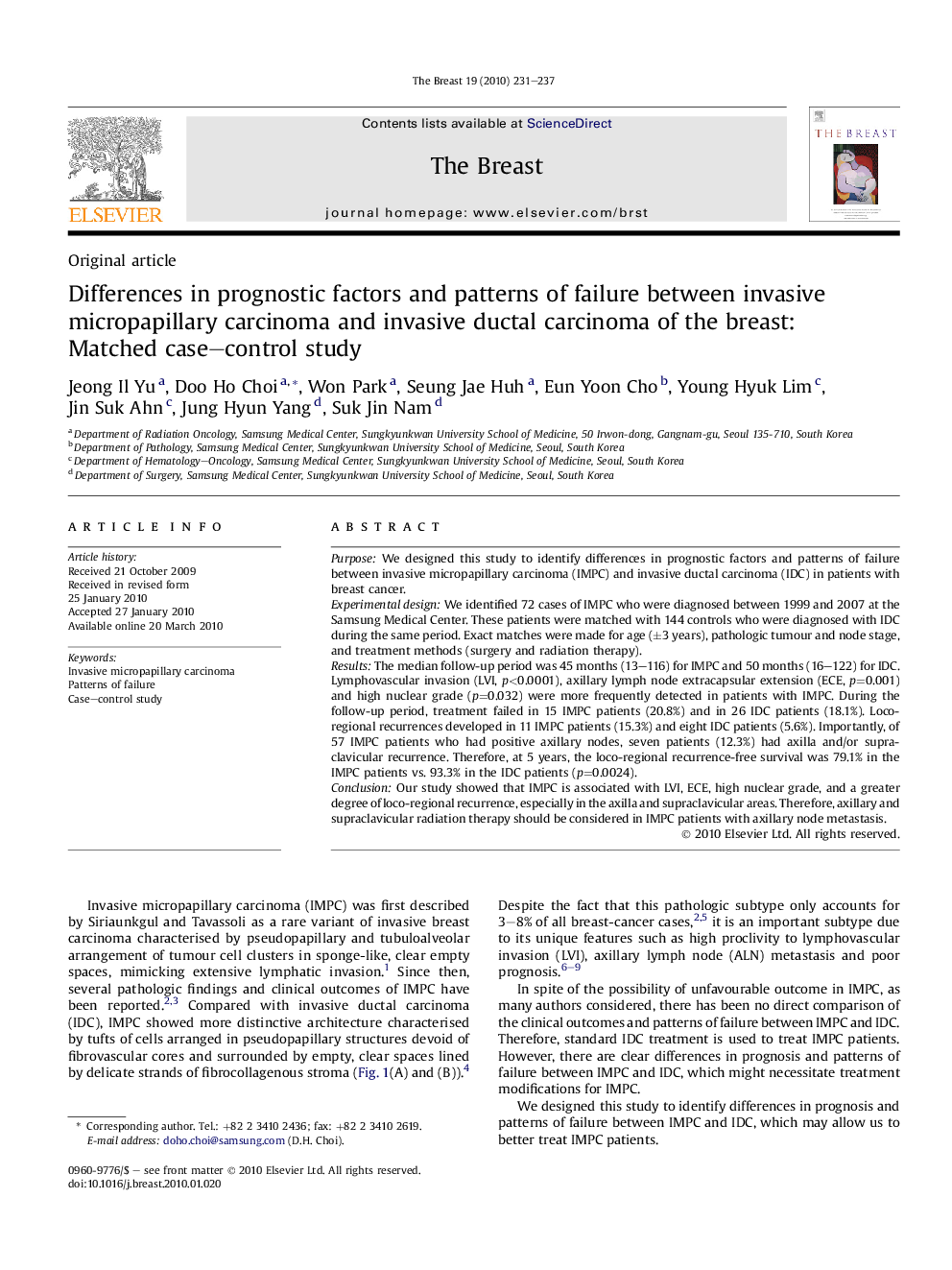| Article ID | Journal | Published Year | Pages | File Type |
|---|---|---|---|---|
| 3909388 | The Breast | 2010 | 7 Pages |
PurposeWe designed this study to identify differences in prognostic factors and patterns of failure between invasive micropapillary carcinoma (IMPC) and invasive ductal carcinoma (IDC) in patients with breast cancer.Experimental designWe identified 72 cases of IMPC who were diagnosed between 1999 and 2007 at the Samsung Medical Center. These patients were matched with 144 controls who were diagnosed with IDC during the same period. Exact matches were made for age (±3 years), pathologic tumour and node stage, and treatment methods (surgery and radiation therapy).ResultsThe median follow-up period was 45 months (13–116) for IMPC and 50 months (16–122) for IDC. Lymphovascular invasion (LVI, p<0.0001), axillary lymph node extracapsular extension (ECE, p=0.001) and high nuclear grade (p=0.032) were more frequently detected in patients with IMPC. During the follow-up period, treatment failed in 15 IMPC patients (20.8%) and in 26 IDC patients (18.1%). Loco-regional recurrences developed in 11 IMPC patients (15.3%) and eight IDC patients (5.6%). Importantly, of 57 IMPC patients who had positive axillary nodes, seven patients (12.3%) had axilla and/or supraclavicular recurrence. Therefore, at 5 years, the loco-regional recurrence-free survival was 79.1% in the IMPC patients vs. 93.3% in the IDC patients (p=0.0024).ConclusionOur study showed that IMPC is associated with LVI, ECE, high nuclear grade, and a greater degree of loco-regional recurrence, especially in the axilla and supraclavicular areas. Therefore, axillary and supraclavicular radiation therapy should be considered in IMPC patients with axillary node metastasis.
